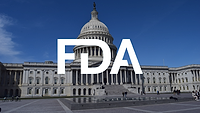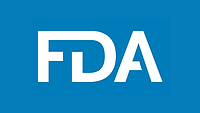FDA Human Foods Program Reveals Work Plans for 2025

Image credit: Logan Voss via Unsplash
The U.S. Food and Drug Administration’s Human Foods Program (FDA’s HFP) has published a list of priority work it intends to deliver upon in Fiscal Year (FY) 2025.
Under the newly reorganized HFP, which came into effect October 1, 2024, the agency’s food regulatory work falls into three program areas: microbiological food safety, food chemical safety, and nutrition.
Microbiological Food Safety
FDA’s microbiological food safety program area focuses on efforts to prevent or significantly reduce the incidence of foodborne illnesses from FDA-regulated foods. In FY 2025, the agency’s work priorities in this area will include:
- Finalizing an implementation plan and executing industry education programs for the Food Safety Modernization Act (FSMA) Final Rule on Preharvest Agricultural Water
- To support the implementation of the Food Traceability Final Rule (also known as FSMA 204), advancing traceability tools and other resources through a multi-pronged approach to educate and engage with industry
- Issuance of a final guidance for the FSMA Produce Safety Rule and development of resources to support compliance with other FSMA rules
- Beginning a new study in Southwest Indiana to better understand the ecology of human pathogens in the environment following multiple Salmonella outbreaks linked to melons grown in the region
- Integrating GenomeTrakr data from food and facility inspections and sampling by FDA and state partners into the U.S. Centers for Disease Control and Prevention’s (CDC’s) new outbreak surveillance platform, PN 2.0, which collects whole genome sequencing (WGS) data from the PulseNet clinical laboratory network
- Onboarding new labs to the GenomeTrakr Network and launching a public training resource site covering the entire genomic surveillance workflow for the expansion of foodborne pathogen surveillance
- Engaging with industry stakeholders to inform, develop, and implement mitigation strategies for microbiological food safety risks
- Establishing formal food safety data-sharing agreements with industry
- Publishing a new public outbreak report summarizing data and findings from past outbreak investigations on an undisclosed pathogen-commodity pair that has caused repeated foodborne illness outbreaks
- Implementing and working toward seafood safety regulatory agreements with Ecuador, India, and Indonesia
- In collaboration with federal and state partners, advancing the Highly Pathogenic Avian Influenza (HPAI) silo study to monitor the safety of dairy and milk products.
Food Chemical Safety
Using a risk management approach, FDA will focus its efforts in FY 2025 on enhancing its regulatory approach to food chemical safety and dietary supplement policy, and coordinating on regulatory and scientific issues for foods made through innovative technologies. Specific work priorities include:
- Completing a review to identify efficiencies in FDA’s current pre-market review processes for manufacturer submissions for food and color additives, food contact substances, and “generally recognized as safe” (GRAS) substances, and to ensure operational alignment under the new HFP organizational structure
- Redesigning the agency’s framework for the post-market assessment of chemicals in food based on feedback received on its proposed systematic approach, and publishing an updated list of substances prioritized for re-assessment with projected timelines
- Issuance of a guidance under the Closer to Zero initiative to establish action levels for environmental contaminants in foods intended for infants and young children, including a final guidance on action levels for lead
- Releasing additional sections of the New Dietary Ingredient Notification (NDIN) final guidance to better inform industry on how and when to submit new dietary ingredient notifications
- Issuance of the draft guidance for the FSMA Preventive Controls for Human Food Rule, specific to Chemical Hazards
- Completing external review and validation of the Expanded Decision Tree, a scientific tool that sorts chemicals into classes of toxic potential using a series of structure-based questions
- Developing artificial intelligence (AI) approaches to enhance FDA oversight, such as the Warp Intelligent Learning Engine (WILEE), a horizon-scanning monitoring tool for signal detection and surveillance of the food supply
- Expanding the use of new methods to better understand exposure to per- and polyfluoroalkyl substances (PFAS)
- Developing and disseminating plain-language educational materials about foods for infants and young children that are nutritious while minimizing dietary exposure to unavoidable contaminants
- Pursuing formal agreements with international regulatory counterparts to facilitate partnering on food chemical and innovation issues.
Nutrition
In the area of nutrition, FDA will focus its FY 2025 efforts on labeling and other initiatives to help consumers make more informed choices about the food they eat, and, for those who rely on certain critical foods as their sole source of nutrition, such as infant formula, working to make sure those products are safe, properly labeled, and nutritionally sound. A major focus will be increasing the resiliency of the U.S. infant formula market, including the publication of a long-term national strategy, which will help facilitate entry of new infant formula manufacturers to increase supply and mitigate future shortages, and will recommend necessary authorities to gain insight into the supply chain and risks for shortages. FDA will also develop and share a continuing medical education program for pediatricians on safe handling of powdered infant formula.
Other nutrition work priorities include updating FDA’s “healthy” nutrient content claim, proposing front-of-package nutrition labeling, supporting reductions in sodium in the food supply, collaborating on a nutrition research agenda, and focused engagement on nutrition initiatives.
Progressing the Human Foods Program
Although the newly reorganized HFP officially came into effect on October 1, significant work will continue through FY 2025 to fully operationalize the program. First, the FDA is prioritizing the hiring of permanent leadership for HFP offices. Once leadership is in place, HFP will develop and release a multi-year strategic plan.
Additional operational changes will also take place to integrate critical processes and systems to better support the mission of HFP. Specifically, FDA will leverage enhanced risk modeling to drive allocation of field resources, integrate FDA food laboratories, advance training of new regulators, establish a Human Foods Advisory Committee of external experts, improve the reach and clarity of recall communications, and develop a coordinated performance management framework for HFP.
Read the full release of HFP FY 2025 deliverables here.
Looking for a reprint of this article?
From high-res PDFs to custom plaques, order your copy today!









